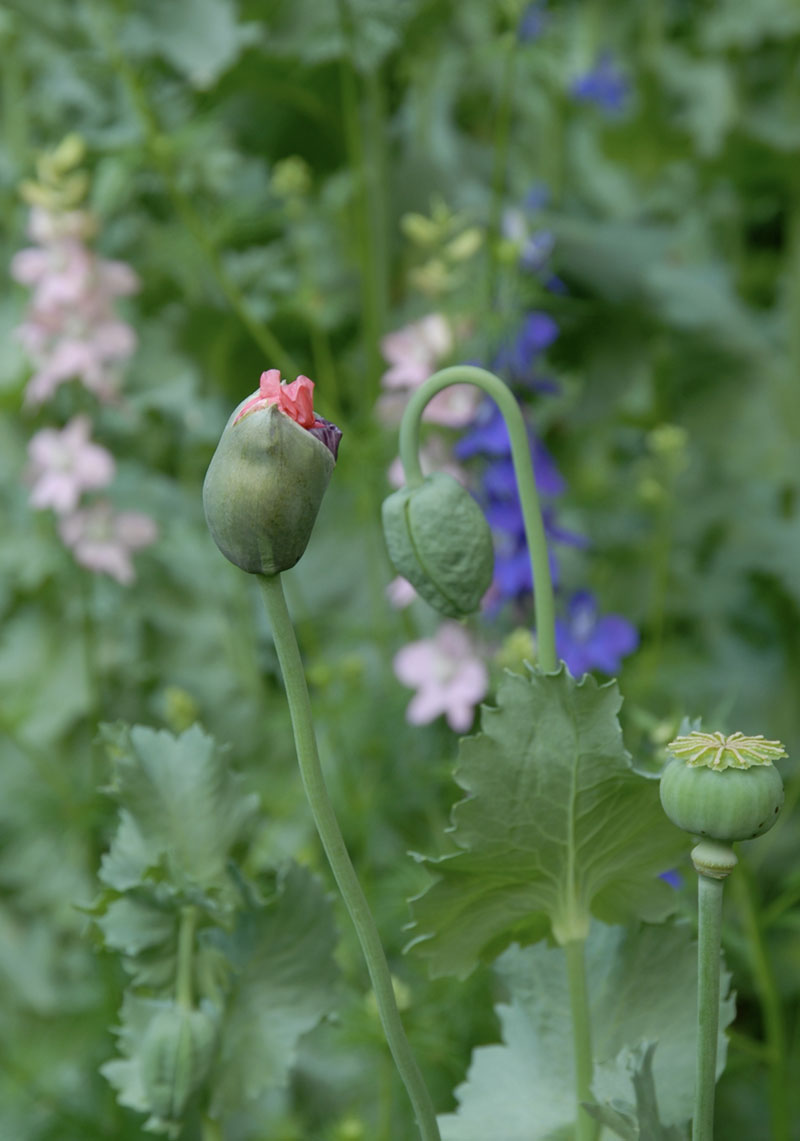
Poppies and larkspur, grown from seed scattered in the fall, bloom in the author's garden.


A young poppy bud hangs heavy on its stem, while another reaches skyward as it begins to bloom. Yet another swells with seed.

Petals resembling crumpled tissue paper open to reveal a crown of golden anthers.

Gradually the petals wither and fall away, leaving the ovary to set seed.

Allow the pods to dry in place on their stems before harvesting.
Gradually the petals withered and fell away, leaving the ovary to set seed and swell into pods. The staccato rhythm of the pods in the border was so striking that they rivaled the poppy flowers for interest. I let the pods dry in place and then harvested them. By this time, the house and garden where these poppies had come from had sold. The first thing the new owners did was get rid of the garden. When I saw them pull up the poppies like weeds, my seeds became even more precious. I had saved something very special from destruction.
I shared these poppy seeds with friends, an elderly lady who is an expert gardener, a young plantsman just beginning his career, a friend who lives in the pine woods of Mississippi, another friend who lives on the bay in San Francisco. I also shared these poppies with a new friend. When she came to visit me in my garden, an instant rapport sprang up between us. I showed her the poppy seedlings and told her about them. She is a writer, and she exclaimed, “That’s great! I think I’ll write that story.”
“No,” I laughed, “I think I’ll write that one.”
Don’t miss: “For the Love of Poppies.” A lifelong passion for poppies led Jenny Elliott on an unexpected journey that resulted in Tiny Hearts Farm.

Beside a vase of poppies, larkspur, and roses, the author displays her grandmother’s straw hat with red poppy flowers and pods.
HOW TO HARVEST, SOW & GROW POPPY SEEDS
- After poppies bloom in spring, seed pods will form. Let the pods dry in place on the plant.
- Clip the dry pods, and place them in a paper bag.
- Store in a cool, dry place over summer.
- In the fall, shake the seeds from the pod over well-prepared soil in a sunny flower bed.
- Water the seeds daily with a gentle shower from the hose.
- After the seedlings emerge and begin to grow, thin them and taper off the watering from daily to every few days to weekly, depending on the amount of rain. The plants will grow over winter and bloom in spring.




